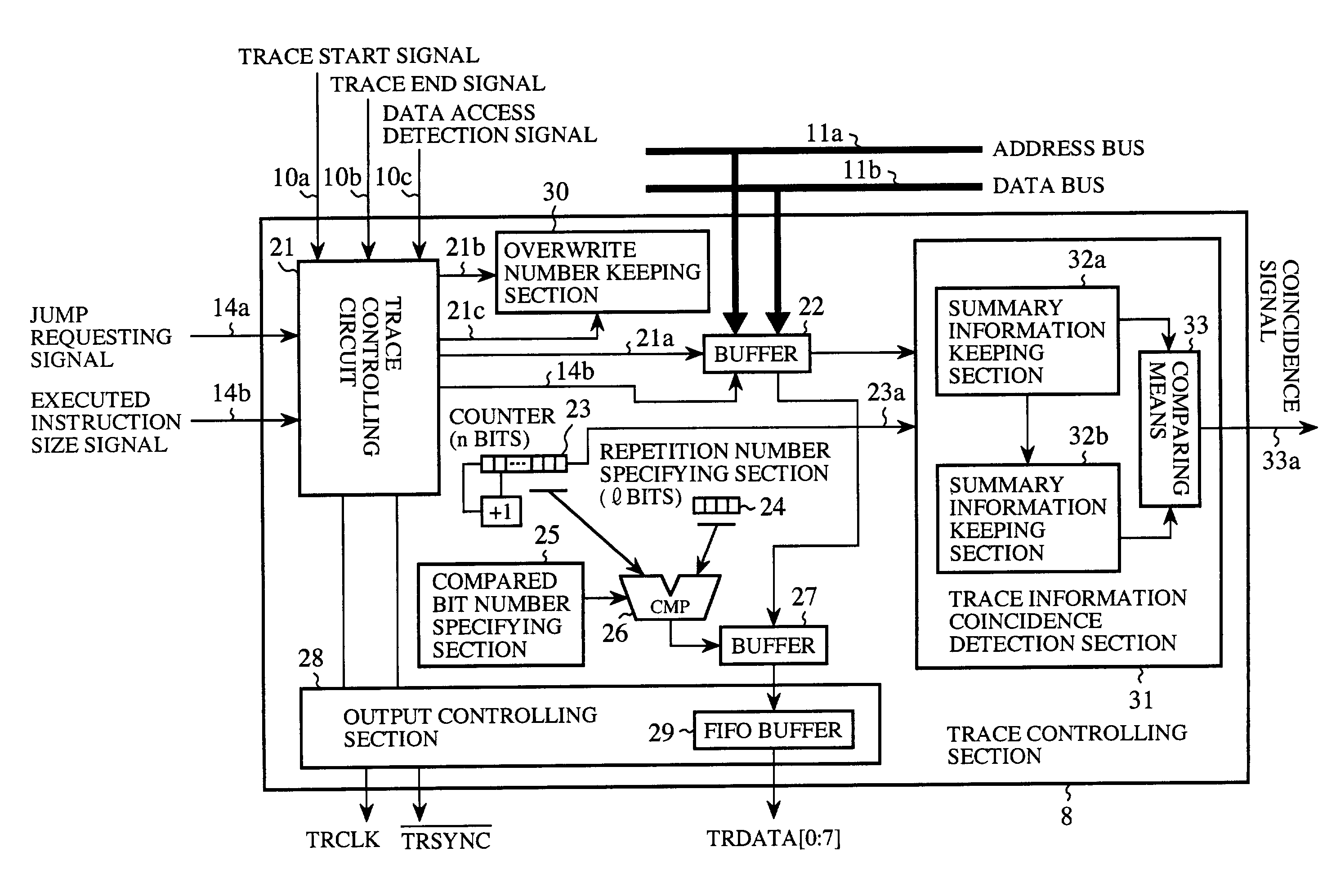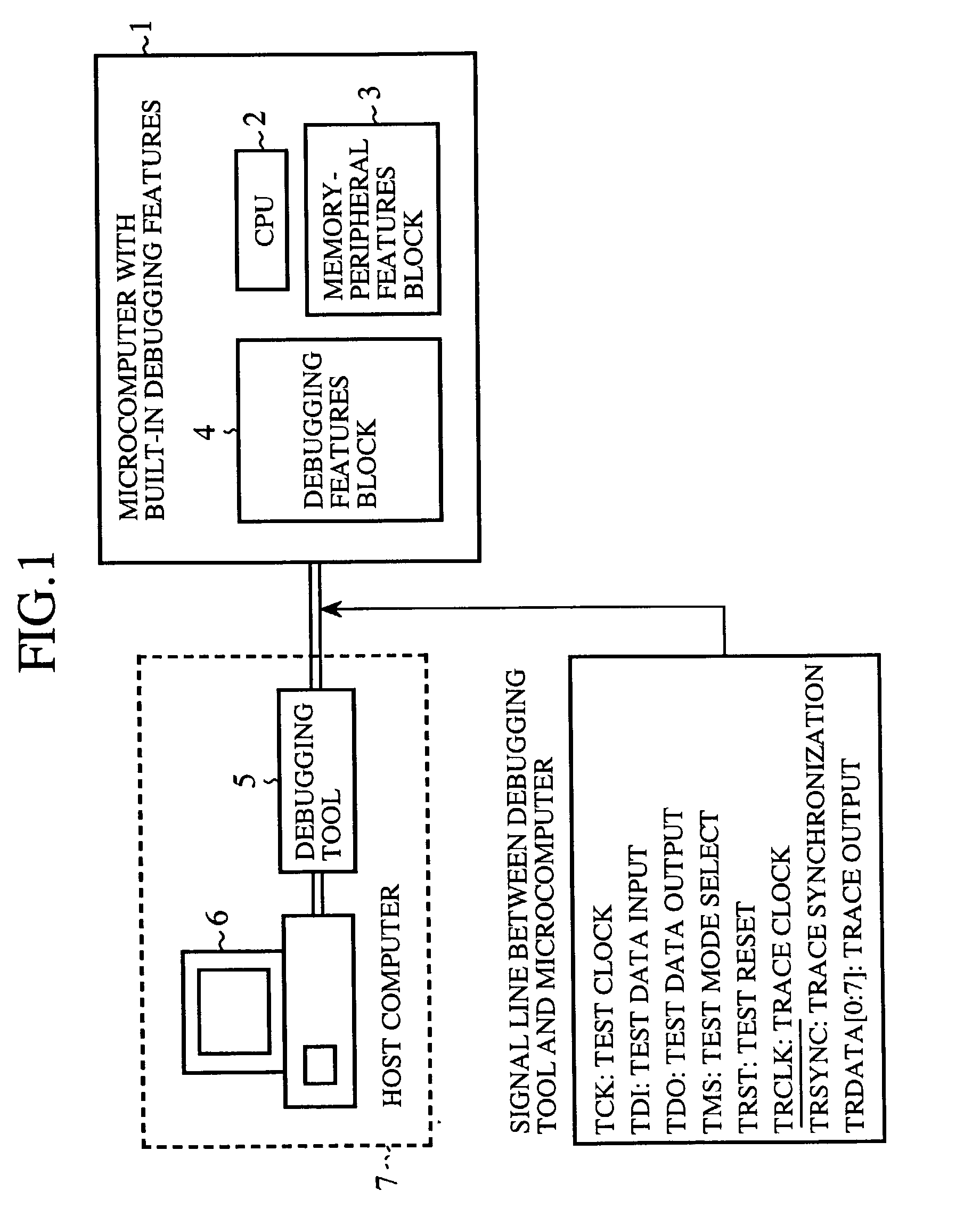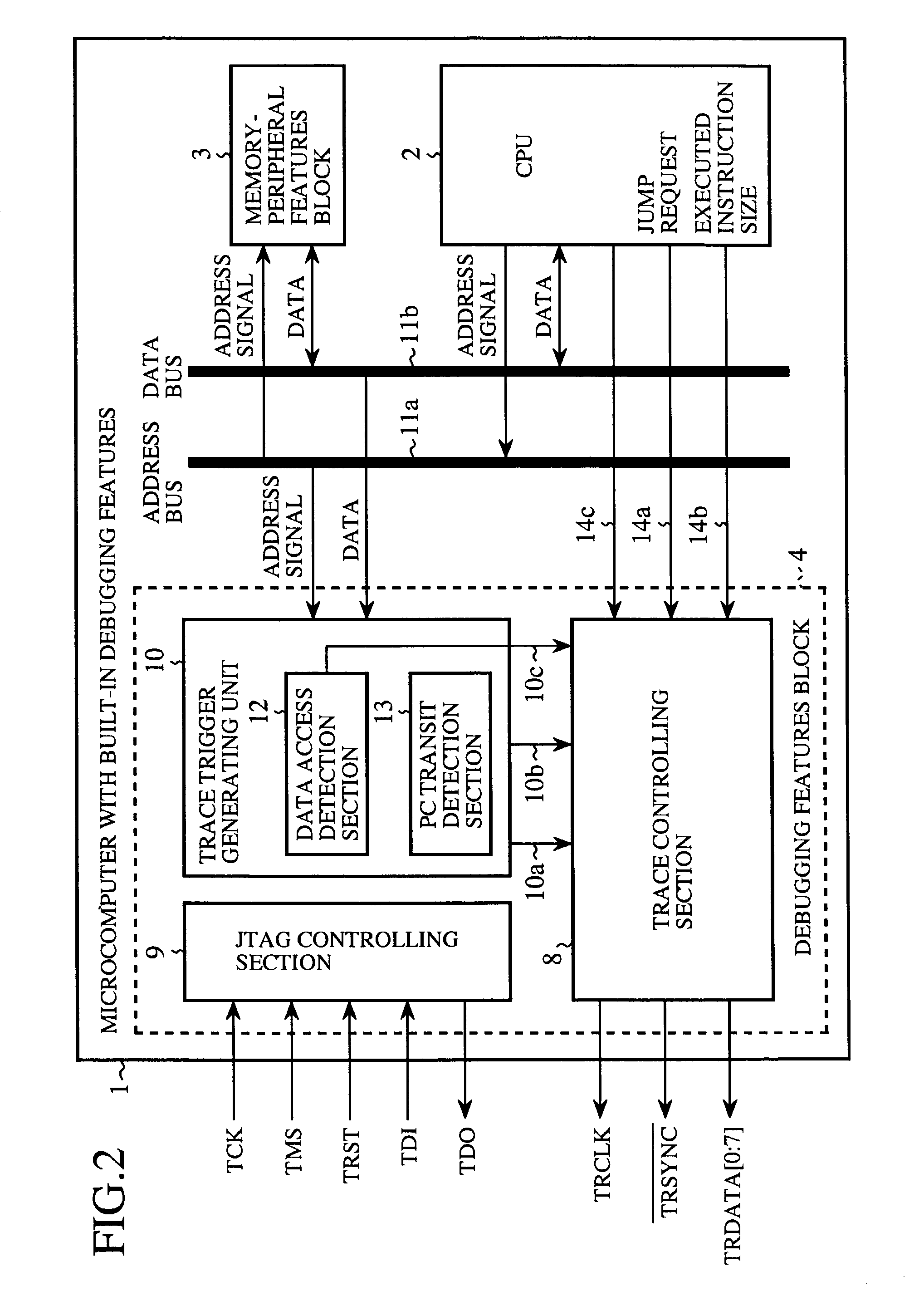Microcomputer and debugging system
a microcomputer and debugging system technology, applied in the field of microcomputers, can solve the problems of significantly affecting the real-time trace, and becoming more difficult to perform the real-time trace, and achieve the effect of eliminating the overflow of trace information
- Summary
- Abstract
- Description
- Claims
- Application Information
AI Technical Summary
Benefits of technology
Problems solved by technology
Method used
Image
Examples
first embodiment
(First Embodiment)
[0051]FIG. 1 is a diagram schematically showing a configuration of a debugging system according to a first embodiment of the present invention. In this figure, a microcomputer with built-in debugging features 1 used in the debugging system according to the first embodiment consists of one chip in which a CPU 2 and a memory-peripheral features block 3 as well as a debugging features block 4 that provides debugging features are formed. The CPU 2 in the microcomputer 1 executes a program to be evaluated that is stored in, for example, the memory-peripheral features block 3. The memory-peripheral features block 3 in the microcomputer 1 includes built-in peripheral I / O such as, for example, a built-in SRAM, a DMA controller, an interrupt controller, a timer and the like. The debugging features block 4 debugs under the control of a debugging tool 5. The debugging tool (debug controlling means) 5 exchanges debug-related information and trace information with the microcomp...
second embodiment
(Second Embodiment)
[0101]FIG. 11 is a block diagram showing a trace controlling section of a debugging system according to a second embodiment of the present invention. In this figure, a reset signal 21b is output from the trace controlling circuit 21 to an overwrite number keeping section 30 to reset the content kept in the overwrite number keeping section 30. An overwrite number setting signal 21c is output from the trace controlling circuit 21 to the overwrite number keeping section 30 to indicate the number of the discarded trace information. The overwrite number keeping section 30 (the discard number keeping means) is comprised of a counter that keeps the maximum number of the trace information that is discarded continuously from start to end of acquisition of the trace information. Here, it is to be noted that elements similar to those in FIG. 4 are given like reference numerals and description of these elements is omitted.
[0102]Next, the operation will be described.
[0103]Firs...
third embodiment
(Third Embodiment)
[0127]FIG. 12 is a block diagram showing a trace controlling section of a debugging system according to a third embodiment of the present invention. In this figure, a counter value indicating signal 23a is output from the trace information counter 23 to a trace information coincidence detection section 31 to notify the trace information coincidence detection section 31 of the number of occurrence of the trace information. The trace information coincidence detection section 31 is comprised of summary information keeping section 32a, 32b and a comparing means 33 and detects whether a plurality of the trace information acquired in a split manner coincides or not. Each of the summary information keeping section (the summary keeping means) 32a, 32b keeps summary information about the trace information acquired in a split manner plural times (that consists of a checksum calculated for all of the trace information, a checksum for the address information in the trace infor...
PUM
 Login to View More
Login to View More Abstract
Description
Claims
Application Information
 Login to View More
Login to View More - R&D
- Intellectual Property
- Life Sciences
- Materials
- Tech Scout
- Unparalleled Data Quality
- Higher Quality Content
- 60% Fewer Hallucinations
Browse by: Latest US Patents, China's latest patents, Technical Efficacy Thesaurus, Application Domain, Technology Topic, Popular Technical Reports.
© 2025 PatSnap. All rights reserved.Legal|Privacy policy|Modern Slavery Act Transparency Statement|Sitemap|About US| Contact US: help@patsnap.com



